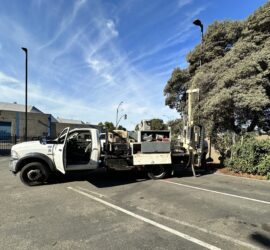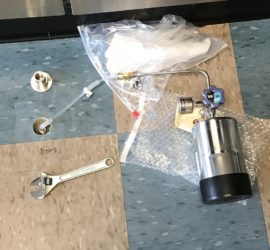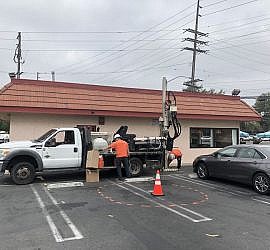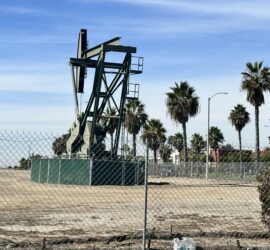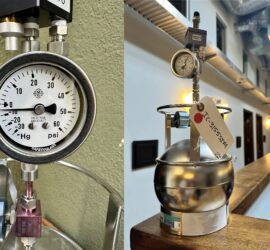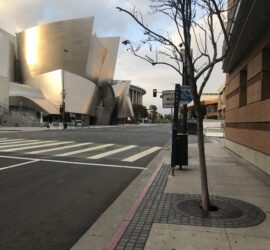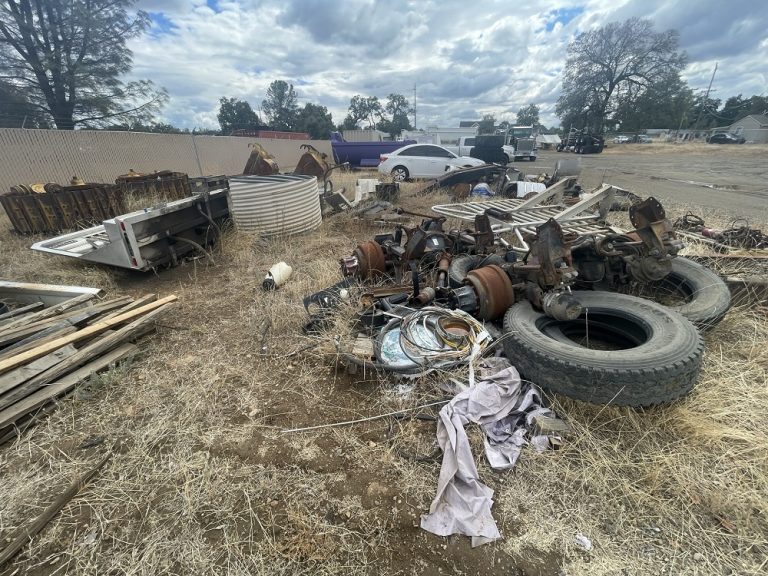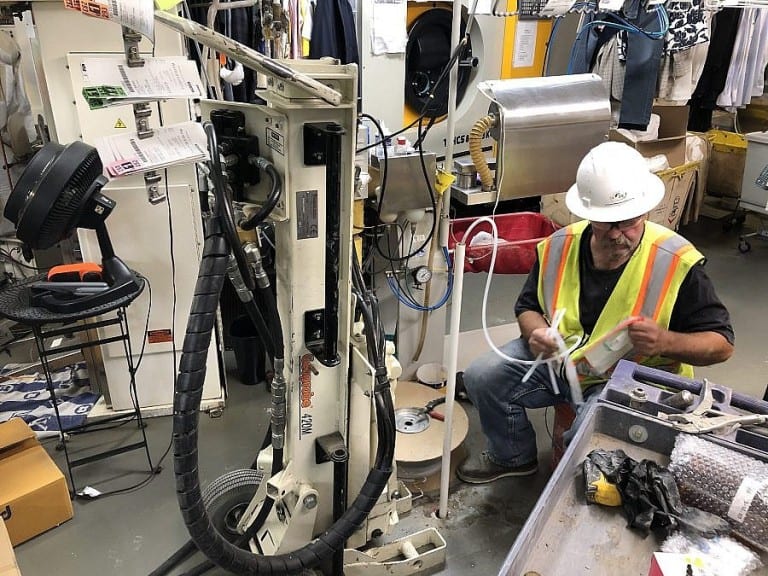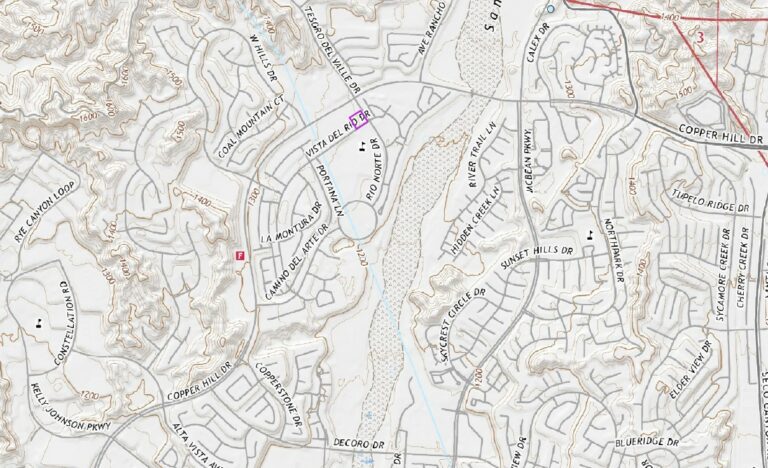What to Know Before a Los Angeles Methane Testing Report
This post provides readers with 10 important things to consider before ordering a Los Angeles methane testing report. For more information about what methane testing is, please refer to Geo Forward’s “Official Methane Testing and Soil Gas Survey Page.” Updated August 7, 2024.
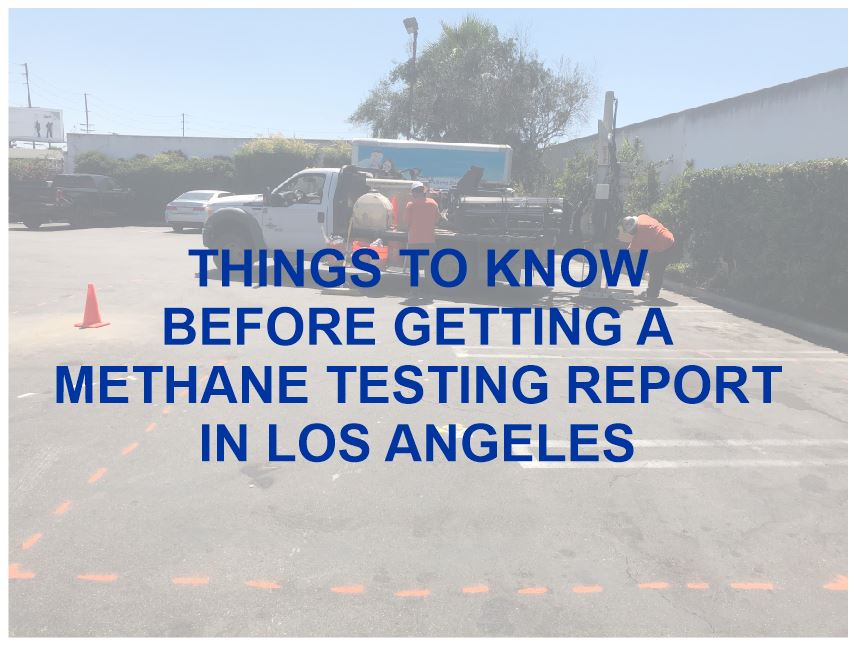
1) Confirm directly with LADBS whether methane testing and mitigation is required.
Basically, construction projects in methane zones and methane buffer zones get the attention of the Los Angeles Department of Building and Safety. Their main concern about methane soil gas hazards is public health and safety. However, in some cases, the Los Angeles Building Code may have an applicable exception. For example, small additions to an existing single-family residential building. As a result, Geo Forward advises consumers to double-check with the LADBS to make sure a methane test and mitigation plan are required.
2) Only consult licensed methane testing companies.
Consumers can request bids for a methane test using search engines, referrals, or the LADBS methane testing agency roster. Regardless, it is important to verify that the company offering this service has LADBS certification, and maintains supervision by a state-licensed professional geologist.
3) If the property is in a “Methane Zone:” Order the “Methane Soil Gas Test” + “Mitigation Plan” together at once.
There are two types of zones for methane soil gas hazards in Los Angeles. To illustrate, there are “Methane Zones,” as well as “Methane Buffer Zones.” And per the Los Angeles Building Department (LADBS) Methane Code, each zone has different mitigation criteria, depending on methane test results.
Projects within “Methane Zones” will undoubtedly require some level of methane mitigation. For instance, even with the lowest possible results of a methane test report, a passive mitigation system is mandatory. For this reason, it is the most cost-efficient and time-efficient to order the methane soil gas survey and methane mitigation plan together at once.
4) If the property is in a “Methane Bufffer Zone:” Order the “Methane Soil Gas Test” first, and separately, a “Methane Mitigation Plan” if needed.
For properties in a “Methane Buffer Zone“, there is a possibility that a methane mitigation system may not be required at all. So in Methane Buffer Zone sites, it’s most wise to initially order the methane soil gas survey before a mitigation plan. A certified Los Angeles methane test report will clarify whether there is, or isn’t, a requirement for a methane mitigation plan. In fact, some buffer zone sites with low-level methane results may have no further action at all. Whereas other high-level sites may require the complete methane mitigation process.
5) Los Angeles methane testing results can differ from one adjacent lot to another.
There is no ability to predict methane soil gas concentrations underground without a soil gas survey. In fact, two adjacent properties can have extremely different results during a methane test. This is because the geology of the greater Los Angeles basin comprises non-homogenous alluvium soils and a few types of sedimentary bedrock formations. As a result, the horizontal and vertical variations of gravel, sand, silt, and clay layers underlying each property are different. Each type of these soils has different gas-bearing characteristics, which is a function of permeability, porosity, degree of saturation, and proximity to petrogenic and biogenic natural gas sources. Thus, a property can have methane test results as low as Level 1, whereas the adjacent property may have results as high as Level 5.
6) Methane soil gas concentrations can be variable at different times.
Two methane tests conducted at different times can produce different results. To illustrate, climate variations cause changes to the degree of saturation in soil, as well as barometric pressure and soil formation pressure. And each of these variables alters the gas-bearing properties of the subsurface lithology, as well as soil gas migration patterns during sampling. As a result, some testing timeframes can yield higher or lower concentrations of methane compared to other timeframes. And this differential is also unpredictable. For this reason, it’s always possible that a re-test methane survey can yield different results from the original methane test. Nonetheless, the Los Angeles Methane Code defines the “Design Methane Concentration” as the highest overall detection of methane soil gas.
7) Know that methane testing results can be variable by depth and location on the property.
The same reasoning in paragraphs 6 and 7 above applies to the reason why methane soil gas concentrations change by location and depth. For example, installing a soil gas probe to 20 feet below grade at one location for the lot may intercept a type of soil that yields Level 1 results. Whereas another 20 feet deep probe just a few feet away can intercept a different soil layer. Thus yielding Level 5 results. Similarly, the same variations apply across different depths and areas of a single lot. As a result, it’s always possible that a re-do methane test may produce different results than the original survey, without any of the two tests being incorrect. And the LADBS is aware of these variations. Thus, the Los Angeles methane testing standards require a spread of sampling points during testing.
8) LADBS makes all conclusions and recommendations (not the geologist).
The methane testing company and its geologists do not make the recommendations for vapor mitigation. They simply perform the scientific testing process that determines the site design level. In fact, the conclusions and recommendations are pre-set in the LADBS Methane Code, for each level and development type. Tables 1A and 1B of the LADBS Standard Plans demonstrate these pre-set recommendations.
9) The Standard Plans do NOT satisfy general plan check requirements.
The City of Los Angeles Methane Mitigation Standard Plan is a generic guidance for mitigating small slab-on-grade dwellings. However, it is NOT a proper methane mitigation plan and does NOT satisfy the modern requirements of the plan check departments. Standard plans lack the necessary information for building departments to approve, contractors to build, and field inspectors to verify and pass. For instance, standard plans exclude material specifications, application details, professional certification, and more. For these reasons, most building departments are no longer likely to accept the standard plans as mitigation plans.
As a result, a site-specific methane mitigation plan is necessary for projects with a “design methane concentration” within zoning thresholds. Proper mitigation plans include specifications for the most cost-efficient methane barriers with waterproofing capabilities, as well as certification, warranty, job-specific construction details, application details, and more.
10) Drilling Refusal Can Occur During a Methane Test
Drilling refusal is the process by which drilling rig operators are no longer able to advance their equipment any further within the subsurface. And drilling refusal occurs due to conditions that are out of the driller’s or geologist’s control. For instance, highly dense soils, or the presence of bedrock can result in drilling refusal during a methane test. In accordance with the standard practices of the environmental engineering industry and recommendations of oversight agencies, subsurface samples are to be collected at the next-best achievable depth in the event of drilling refusal.
For more information about barrier construction, please review Geo Foward’s post “What to Know About Methane Mitigation Construction.”

